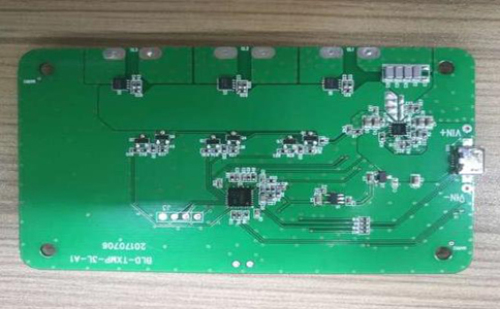Introduction: At present, there are only a few companies that plan to do digital demodulation in China, and most of them are still patching the analog demodulation solution. As of September, the most successful digital demodulation solution in China was the Bertrand solution using the D9602 as the main control chip. It was equipped with a highly integrated power supply chip D9009, which not only perfectly solved the problem of virtually all certification tests in the field of wireless charging from the design source.

Wireless charging technology has a long history. It can be traced back to Tesla's experiment. Wireless charging officially entered the consumer electronics industry in recent years. In the past 12 years, Nokia has taken the lead in adding the QI standard formulated by the WPC Alliance. Coil officially opened the wireless era of mobile phone charging, but with the radical changes in the smart phone market, Nokia did not inherit the glory of its functional era. Wireless charging has not been known to consumers because of Nokia's favor.
Samsung mobile phones began to try to use wireless charging in 13 years, but they do not have a wireless charging receiver as standard. They are only between the built-in battery and the back cover, and they reserve a first-level coil space for the wireless charging receiver, wireless charging. Reception has become an optional configuration for the Samsung N2/N3 and other models. In the early part of the year, with the non-removable design of mobile phones and Samsung’s accumulation of wireless charging technologies, Samsung’s mobile phones have built-in standard wireless charging for the first time. S6 appears to support 5W wireless charging under the QI 1.1.2 protocol; in August of the same year, Samsung NOTE5 was released, also built-in standard QI5W wireless charging, also added Samsung's own 9V1.1A wireless fast charging protocol, and released the Samsung second generation wireless Charger, adaptive 5V/9V dual mode wireless output function, 9V mode requires the adapter to comply with QC2.0 above protocol and fast charging data line to do the power supply, wireless charging products officially began to enter the mass market into the consumer market.
At the end of 16 years, the accuracy of Apple 8's wireless charging was basically determined in the wireless charging circle. At the beginning of the year, Apple formally joined the WPC Alliance. Basically, Apple 8 will adopt the QI wireless charging method, but the specific parameters need to be determined until July. The PCBA prototype photos of Apple's original wireless charging TX have been circulated. It was confirmed that it was manufactured using Freescale chips, and the circuit was confirmed to be a digital demodulation wireless charging scheme. From Apple, it has always been the best not to ask for the earliest. The style can also determine that Apple could not use the backward analog demodulation scheme to charge Apple Wireless 8 for several years.
Currently, there are only a few companies that plan to do digital demodulation in the country. Most of the solution companies still keep patches in the analog demodulation scheme. As of September, the most successful digital demodulation solution in China was the Bertrand solution using the D9602 as the main control chip. It was equipped with a highly integrated power supply chip D9009, which not only solves virtually all certification tests in the field of wireless charging from the design source, but also With more powerful than analog demodulation, self-test, protection and other functions, the conversion efficiency is as high as 85%, and a very small number of peripheral components, making PCBA design more flexible and diverse.
At present, the D9602 solution has already entered the stage of one-time rapid QI certification testing. This solution was released in July and it has only been two months since then. The plans of several other domestic companies that introduced digital demodulation solutions earlier have been QI for multiple times due to technical reasons. The test was returned due to a procedural issue.
- 2 In 1 USB Flash Drive
USB 3.1 & Type-C interface, support for Mobile Phones and Computers.
- Small Size / Strong Performance
Plug and play, instantly expand device capacity, Easily solve the memory shortage problem.
- Strong Waterproof & Shockproof
Using domestic UDP technology, safe, waterproof and shockproof, take out and dry immediately after dropping into the water.
- High Speed Transimission
Effectively save file transfer time and greatly increase work efficiency.
Note: The USB Flash Drive supoort Type C and OTG, Only for type C interface phone, do not support Non-type C interface Huawei-and-Xiaomi phone.
Type-C Usb Flash Disk,Key Ring Rotatable U Disk,Type-C Mobile Phone Usb U Disk,Portable 2 In 1 Memory Sticks
MICROBITS TECHNOLOGY LIMITED , https://www.hkmicrobits.com